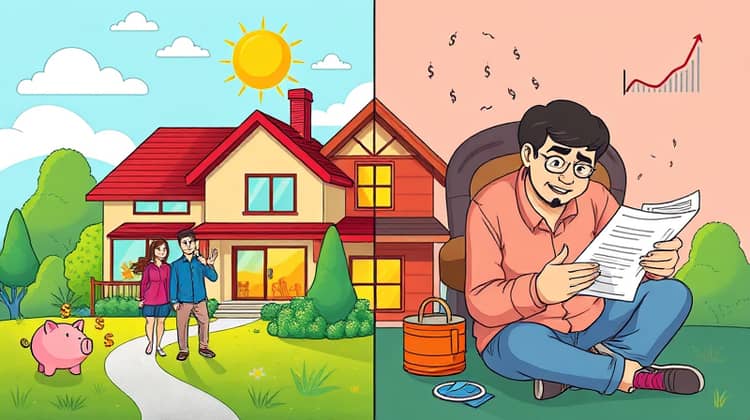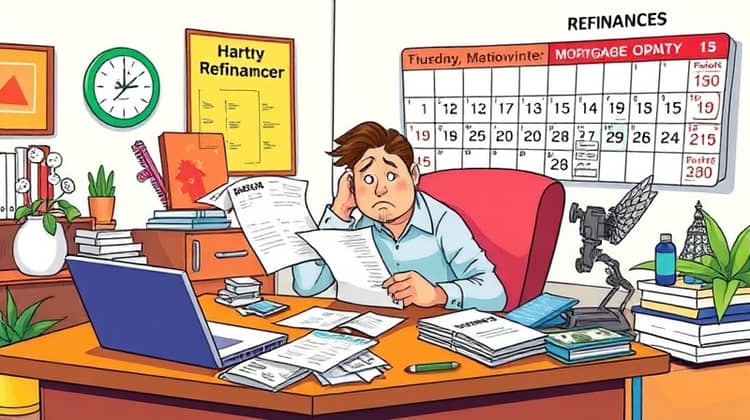In today's ever-changing financial landscape, mortgage refinancing has become a common practice for homeowners looking to save money or access their home equity. It involves replacing an existing mortgage with a new one, often with different terms and conditions, which can lead to lower monthly payments, reduced interest rates, or even cash out for other expenses. Understanding the nuances of mortgage refinancing can help identify if it's the right choice for you and when to pursue it.
This guide provides a comprehensive overview of mortgage refinancing, including the types available, reasons to pursue it, the steps involved, common mistakes to avoid, and how to choose the best option. Let's dive into the details so you can make informed decisions about your mortgage.
What is Mortgage Refinancing?

Mortgage refinancing is the process of obtaining a new mortgage to replace your existing one, often with better terms, rates, or loan amounts. It can be a strategic financial move that potentially leads to significant savings over the life of the loan or allows you to tap into your home’s equity.
Refinancing can be beneficial for various reasons, including navigating changing interest rates, improving your credit score, or consolidating debt. With refinancing, homeowners can tailor their mortgage to better fit their current financial situation, allowing for more flexibility in managing monthly expenses.
Reasons to Refinance

There are multiple motivations behind choosing to refinance your mortgage, and understanding these can help you determine if it’s the right time for you.
- Lower interest rates leading to reduced monthly payments
- Switch from an adjustable-rate mortgage (ARM) to a fixed-rate mortgage for stability
- Access home equity for major expenses like renovations or consolidating debt
- Shorten the loan term to pay off the mortgage faster
- Switch lenders for improved service or different mortgage products
Refinancing can offer immediate financial benefits and long-term savings when executed properly. It’s essential to weigh the pros and cons and conduct thorough research before making this decision.
Types of Mortgage Refinancing

Understanding the different types of mortgage refinancing available is crucial in making the right decision for your financial needs.
- Rate-and-term refinancing, which alters interest rates or loan terms without changing the mortgage’s remaining balance.
- Cash-out refinancing, which allows homeowners to withdraw equity from their home, leading to a larger loan than what’s owed.
- Cash-in refinancing, where homeowners pay a lump sum to reduce their principal balance, potentially lowering payments and interest rates.
Choosing the right type of refinancing depends on your personal financial goals and circumstances, such as your credit score, home value, and current mortgage conditions.
Steps to Refinance Your Mortgage

Refinancing can seem like a daunting process, but following these essential steps can simplify it.
- Evaluate your current mortgage situation and set clear goals for refinancing.
- Research and compare lenders to find the best rates and terms.
- Gather necessary documentation, such as income statements and tax returns, for the application process.
- Submit your application and be prepared for possible underwriting reviews.
- Close on the new loan, ensuring you understand all terms and conditions before signing.
Completing these steps diligently can ensure a smooth refinancing process and help you achieve your financial objectives effectively.
Pros and Cons of Refinancing

Refinancing, like any financial decision, has its advantages and disadvantages. It's important to consider both sides before proceeding. Homeowners can benefit significantly, especially when interest rates drop, or they need to access home equity for financial stability or planned investments.
However, there are costs involved, such as closing costs, which can offset potential savings. Additionally, extending the loan term may result in paying more interest over time, even if monthly payments decrease.
- Lowered monthly payments
- Access to home equity cash
- Reduced interest rates
- Potential tax benefits
- Longer loan term can increase total interest paid
Carefully weighing these pros and cons is a pivotal step in deciding whether to refinance and how it will impact your overall financial health.
How to Choose the Right Refinancing Option?

Selecting the most suitable refinancing option involves assessing your current financial landscape and future goals. Begin by evaluating your current mortgage terms, interest rates, and whether your financial situation has improved since your original mortgage was taken out.
Next, consider your long-term plans for your home and finances. Do you plan to stay in your home for the long-term, or are you thinking of selling soon? Your answer to these questions can influence the degree to which refinancing makes sense for you.
Common Refinancing Mistakes to Avoid

Many homeowners make errors during the refinancing process that can lead to financial setbacks. Awareness of these common pitfalls can save you time and money.
For instance, failing to shop around and compare multiple lenders can result in missing out on better rates and terms. Additionally, ignoring the total costs associated with refinancing can lead to unexpected financial burdens.
- Not considering the long-term implications of the new mortgage terms
- Skipping the research to find the best rates
- Underestimating closing costs
- Rushing into refinancing without a clear purpose
- Neglecting to check credit score improvements prior to refinancing
Avoiding these mistakes can maximize the benefits of refinancing and ensure a worthwhile investment in your financial future.
When is the Best Time to Refinance?

Identifying the best time to refinance your mortgage hinges on various factors, including interest rates, your credit profile, and overall market conditions. Generally, refinancing is most advantageous when interest rates are lower than your current mortgage rate, as this can immediately lower your payments and interest costs.
Additionally, it may also be wise to refinance when your credit score has improved, either due to diligent financial management or market conditions, making you eligible for better rates and terms.
Conclusion

Refinancing your mortgage can be a beneficial decision when executed thoughtfully and strategically. By understanding the various aspects, including potential reasons, types of refinancing available, and the associated pros and cons, homeowners can make informed choices best suited to their financial situation.
Ultimately, careful consideration of market conditions and personal financial goals is essential for successful refinancing, possibly resulting in significant savings and greater financial security.














